Makati City Guide

Makati City Guide
Introducing Makati
Overview
The City of Makati, officially known as Makati, is a first-class city in the Philippines’ National Capital Region. Makati is the country’s financial capital, home to the majority of the country’s global and local firms. If you are working corporate, there is a big chance that you will work in Makati. Makati is home to major banks, corporations, retail stores, and foreign embassies. Ayala Avenue in Makati served as the Philippine Stock Exchange’s largest trading floor before it relocated to the Bonifacio Global City in Taguig. The city of Makati is also a cultural and entertainment center in the Metro Manila area.
Brief History
The word “Makati” comes from the Tagalog word “kati,” which means “tide,” and refers to the Pasig River’s tide. In the pre-Hispanic era, the city was ruled by Lakan Tagkan in the swamplands surrounding the river. The area was founded by Don Manuel Lopez de Legaspi, the Philippines’ first Governor-General. When Legaspi questioned the location’s name, the villagers replied, “Makati na, Kumati na.” as the citizens of Pasig began to evacuate. He named the village “Makati” after the people’s response to his question.
The name was changed to “San Pedro de Makati” in 1890 to honor the city’s patron saint. In the same year, it was recognized as a Manila public town. San Pedro de Makati was integrated into the province of Rizal on June 11, 1901, after the Americans took over control of the island of Luzon from the Spaniards at the turn of the twentieth century.
Investors from around the world began to invest in the municipality, creating enterprises that drew the attention of the town’s international residents. The Philippine Legislature Act No. 2390, passed in 1914, abbreviated the town’s name to “Makati.” During the administration of former Mayor Jejomar Binay. Makati became a city with the enactment of Republic Act No. 7854 and the ratification of a plebiscite in 1995.
Landmarks
Schools:
- Colegio de Santa Rosa – Makati
- Colegio San Agustin – Makati
- General Pio del Pilar National High School
- Guadalupe Catholic School
- Don Bosco Technical Institute of Makati
- Makati Hope Christian School
- Makati Science High School
- St Paul College of Makati
Malls:
- Alphaland Makati Place
- Avenue Mall
- Ayala Malls Circuit
- Century City Mall
- Century City Mall
- Circuit lane
- Glorieta Mall
- Greenbelt Mall
- Power Plant Mall
- Salcedo Saturday market
- SM Jazz Mall
- SM Makati
- The Landmark
Hospitals:
- Healthkard Hospital
- Jose Viray Memorial Hospital
- Makati Dog and Cat Hospital (Veterinary Hospital)
- Makati Medical Center
- Maria Lourdes Maternity Hospital
- Ospital ng Makati
- St. Clare’s Medical Center
Tourist Spots
- Ayala Museum
- Ayala Triangle Gardens
- Circuit Makati
- Glorietta Mall Complex
- Greenbelt Mall Complex
- Guadalupe Church
- Salcedo Market
- Santuario De San Antonio Parish
- Washington Sycip Park
- Yuchengco Museum
While you’re there
Things to see & do
Visit Historical Places
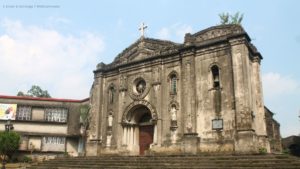
Historical places to visit in Makati.
Are you interested in learning more about Makati City’s history? Makati City has a lot of historical sites, such as time-honored buildings, monuments, palaces, and parks, where you can learn about the city’s illustrious past. These historical sites and museums will take you on a journey through Makati City’s fascinating history.
- Ayala Museum
- Greenbelt Chapel
- Guadalupe Church
- Guadalupe Ruins
Mall Hopping
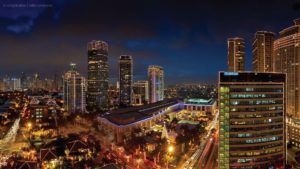
Makati City is a shopper’s wonderland with several magnificent malls dotted throughout, some of which even sit side by side. Whether you’re in for a purchasing binge, cuisine trip, or just a leisurely stroll in air-conditioned bliss, one of Makati’s malls will fit your interest.
Museum Visit
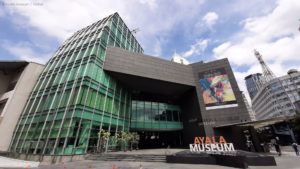
Museums of Makati.
People go to museums for a variety of reasons. It’s not uncommon to see tourists who want to learn more about the place they’re visiting or who just want to enjoy the local art and culture. Meeting new people, learning about our ancestors’ lives, and broadening our thoughts are just some of the benefits of visiting a museum.
Here are some museums you can visit in Makati:
The Ayala Museum is located in the center of the Ayala Center and is open to the public. Some of the museum’s displays rotate with the seasons to reflect Filipino heritage and culture’s changing nature. The Filipinas Heritage Library, a rare collection of books on the Philippines’ history and culture, is located in the building. Family members will enjoy it because it’s one of Manila’s more kid-friendly museums.
Also in RCBC Plaza is the Yuchengco Museum, lovely art and design gallery founded by former Philippine Ambassador Alfonso Yuchengco. Many artworks by Filipino masters, images of the founders’ interactions with foreign leaders, and José Rizal artifacts may be found in the three-level museum.
Stroll
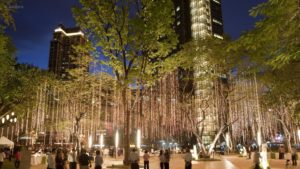
Streets in Makati.
The Ayala Triangle Gardens is a must-see for anyone looking to engage in any type of outdoor activity. An open park is located in the midst of Makati Avenue, Ayala Avenue, and Paseo de Roxas Street. City people and tourists alike can enjoy expansive green spaces like those found in New York’s Central Park. Ayala Triangle Gardens is a popular early-morning destination for those who reside nearby. Working professionals who like to have lunch outside and families will appreciate how convenient it allows it to get in a run or a workout. Weekends are the best time to gather the family and spend some time in nature. Ayala Triangle Garden is also ideal for gathering with loved ones over the Christmas season. It’s not just a great date site in Makati but also an excellent family outing.
Visit the Market
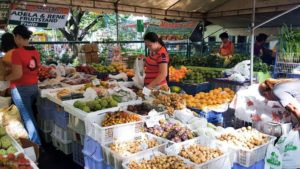
Local Markets in Makati.
The Salcedo Weekend Market, located in Jaime Velasquez Park in Salcedo Village, is a sensory overload. The aroma of culinary treats cooking on the spot and the vast display of local fruit and goods for sale make a trip to the Salcedo Market worthwhile, even if it may get busy and hot, especially during the summer.
Try the vegetable samosas, lobster and scallop balls, Japanese pancakes with your choice of filling, and more if you find yourself in the market crowd.
Shopping & Nightlife

Shopping areas and malls in Makati.
Makati, the country’s financial capital, is also the country’s shopping destination. There are a wide variety of shopping centers and local markets to choose from.
In Rockwell Center, you can go to the Powerplant Mall. A “city within a city” is how this location is referred to. Powerplant Mall is a favorite hangout for the wealthy and several celebrities. The vibe is elite, despite the fact that it is smaller than its Ayala Center competitors. Powerplant Mall has been catering to the city’s most trendy shoppers in recent years.
Greenbelt is another option. Greenbelt features five shopping districts, from Greenbelt 1 to Greenbelt 5. Greenbelt 5 is the newest and most upmarket of the five shopping complexes, located in the heart of Ayala Center. The Greenbelt Mall is fantastic since each shopping area has its own atmosphere, characteristics, and architecture. Greenbelt 1, for example, is the oldest and was built in the 1970s. It features a few modest stores, eateries, and a movie theater.
Compared to Greenbelt 3, which has a larger and more premium theater, the atmosphere is more relaxed and intimate. Greenbelt is also the perfect place to go if you are finding high-end brands. Balenciaga, Dior, and Hermes are among the most upscale stores in Greenbelt 3. Greenbelt becomes an eating and entertainment destination at night, complete with live music from restaurants, cafes, and bars. In Greenbelt 3’s open-air restaurants, visitors can enjoy cocktails and tapas while enjoying the sunny weather. It’s genuinely one of the most enjoyable activities in Makati.
Food & Drinks

Delicious cuisines of Makati.
If you’re looking for a multicultural experience in the city, Makati has always been your best bet. As we transition to a new normal, this city has a lot to offer, especially for foodies. Makati’s restaurant, pub, bar, and café strip add to the city’s reputation as a culinary and drinker’s paradise.
Here are some of the places you should include in your pub crawl.
- Alamat Filipino Cuisine – Don Pedro, Poblacion, Makati
- El Chupacabra – Felipe, Makati
- Firefly Roofdeck Restaurant – City Garden Grand Hotel
- Mendokoro Ramenba – V Corporate Center, Salcedo Village
- YOI x Hamaru Yakitori & Sushi – Fermina, 5972 Alfonso, Makati
- Z Hostel Roofdeck – Don Pedro, Makati
There are a lot of food establishments that you can visit in Makati, but we will leave it for you to explore!
How to get to Makati
By Bus
Buses from the North and South of Metro Manila travel through Makati on a daily basis. If you wish to take a bus traveling along Ayala Avenue or one of Makati’s most important streets, look for the Ayala LRT sign.
The Premium P2P bus service, a DOTr initiative, now allows commuters and visitors alike to move across Metro Manila with convenience and confidence.
The cost of a one-way ticket starts at PHP100; however, this may vary based on the conditions, so do your research. P2P bus schedules and routes to and from Makati are available on their website. P2P bus pick-up and drop-off ports in Makati are generally found in malls like Greenbelt and Glorietta.
By Train
Take the Metro Rail Transit (MRT) if you don’t mind roughing it. Taking the train to Makati from other major Metro Manila cities such as Quezon City, Pasig, Mandaluyong, and Pasay is by far the most cost-effective option. The MRT line goes along EDSA, and you can get out at Ayala Station (near Makati CBD) if you’re going to Makati. A one-way ticket will cost you at least PHP13.00.
From Nearest Airport
To get from the airport, you can take a conventional metered white taxi/cab, or you can take a yellow premium taxi/cab. Ride-hailing services like Grab offer reputable taxis and private automobiles.
Makati has made it possible to live and play in the same city where you work. The city truly offers something for anyone, regardless of age, socio-economic background, and race. You’ll never run out of where to go in Makati.
Makati is a true melting pot of city life customs and traditions and it has many hidden gems waiting to be discovered.



